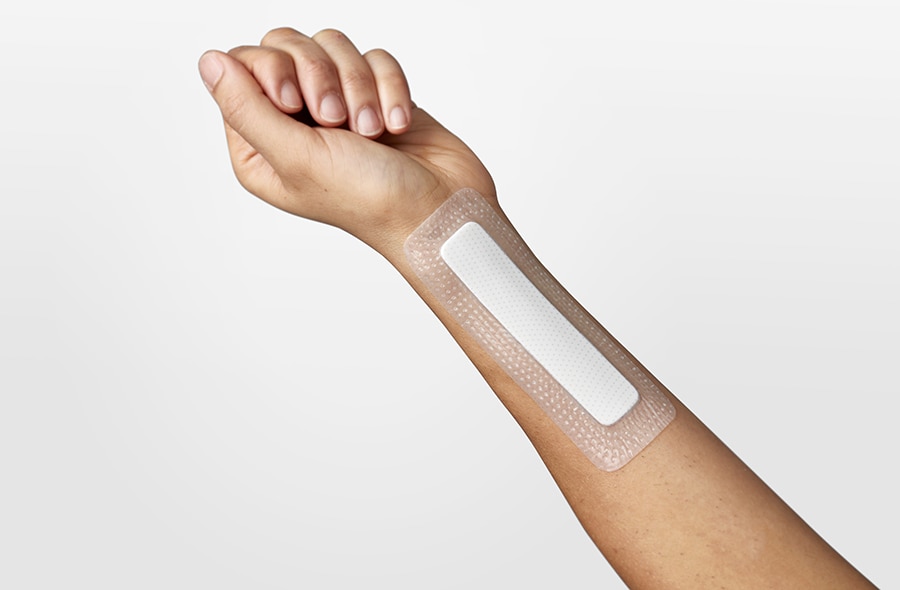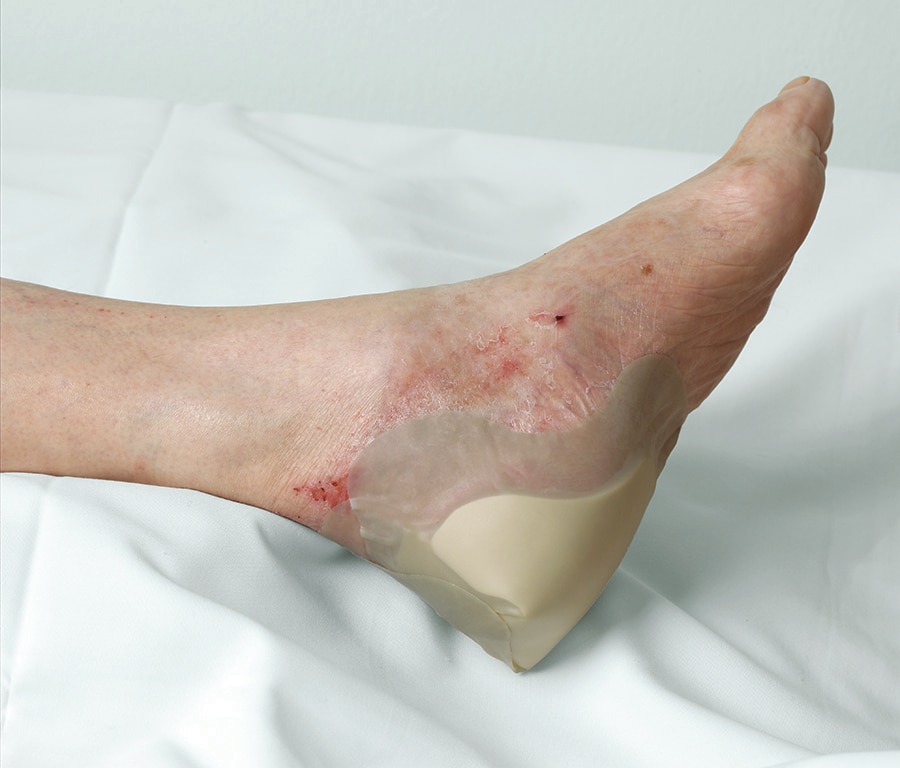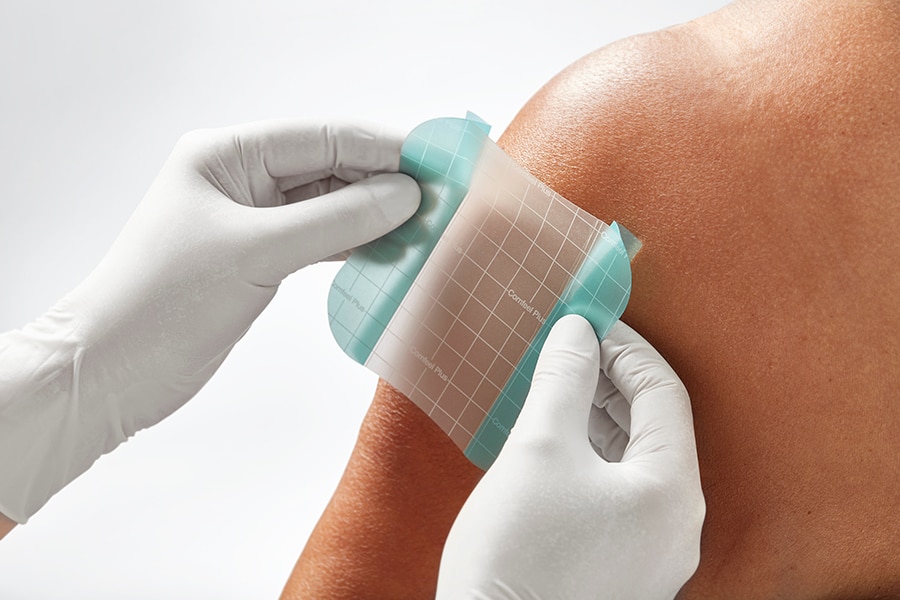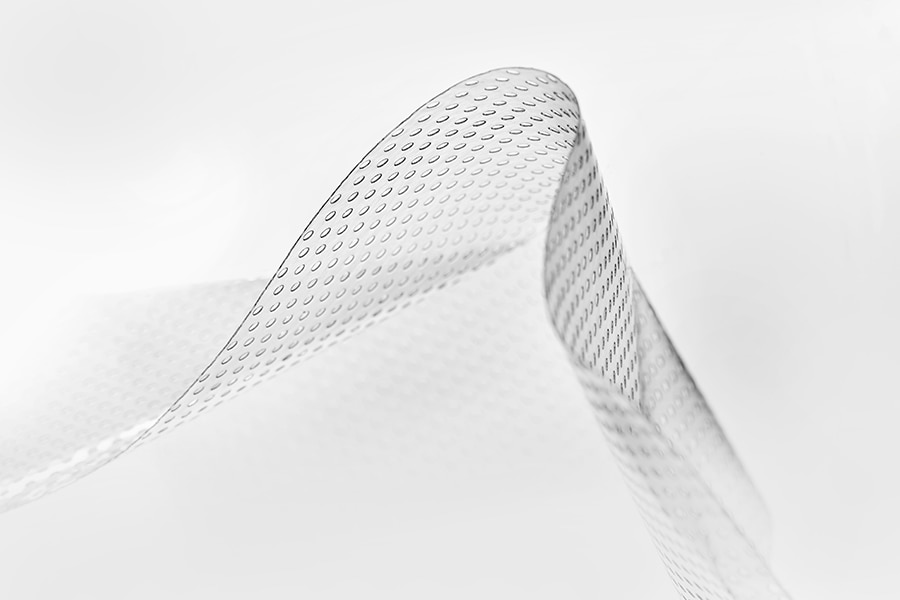
What is a foam dressing?
Foam dressings are formed from synthetic polymers, polyurethane or silicone. They can also be made of composites with other materials.1
Foam dressings can be both adhesive and non-adhesive:
- Adhesive foam dressings can either have a silicone adhesive, or a stronger adhesive, such as a hydrocolloid
- Non-adhesive foam dressings can be used in places on the body where the dressing is held in place by other devices, such as a compression bandage, for example. They can also be used on fragile skin.
The type of adhesive you choose will depend on how adhesive the dressing needs to be and the condition of your patient’s skin. (See how to choose the right foam dressing for more information.)
How do foam dressings work?
Foam dressings are designed to absorb exudate into the dressing. Some are also able to transmit moisture vapour away from the wound bed towards the upper surface of the dressing – where the moisture can evaporate from.2
Did you know?
Foam dressings can also contain active ingredients that are released when the dressing absorbs exudate. This could be silver for infected wounds or wounds that are at-risk of infection; or ibuprofen for painful wounds.
References
- World Union of Wound Healing Societies (WUWHS), Consensus Document. Wound exudate: effective assessment and management. Wounds International, 2019
- Managing wound exudate and promoting healing.





